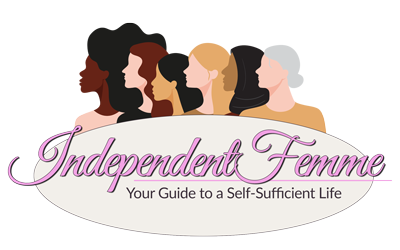If you’re unable to work because of an injury or illness, figuring out how to pay your bills can be overwhelming. On average, people are staying on temporary disability longer as they age.
Our article breaks down all you need to know about temporary disability benefits, ensuring you understand how to access the support you deserve during tough times. Discover key facts that could make a big difference for your financial health.
Key Takeaways
- Temporary disability benefits provide financial support to individuals unable to work due to non-work-related illness or injury, with eligibility and duration varying based on state laws and individual circumstances.
- Age influences the duration of temporary disability benefits, with older individuals generally receiving benefits for a longer period. The pandemic has also impacted access to these benefits, leading to fluctuations in claims.
- Return-to-work intentions, duration of temporary disability payments, and socio-demographic factors all play crucial roles in determining when individuals can return to work after a temporary disability. Supportive workplace environments and rehabilitation programs are key factors in facilitating successful reintegration into the workforce.
Understanding Temporary Disability Benefits
Temporary disability benefits provide financial assistance to individuals who are unable to work due to a non-work-related illness or injury. Eligibility and duration of these benefits depend on various factors, including the state’s laws and individual circumstances.
Definition
Temporary Disability Benefits are payments you get when you can’t work because of a health problem. This money helps you pay for things while you’re getting better. If your body gets hurt or you become sick and it’s not because of your job, short-term disability can help with cash each week.
Long-term disability benefits do the same thing but for a longer time.
You have to meet certain rules to get these benefits, like how long you’ve worked or how much money you made at your job.
Eligibility
To be eligible for temporary disability benefits, individuals must have worked 20 weeks earning at least $260 weekly or earned a combined total of $13,000 in the base period. It’s essential to note that most plans for disability benefits require that the employee has been a regular, full-time employee to receive benefits.
Additionally, for those looking to apply for short-term disability through work or other means, specific procedures need to be followed to qualify for these benefits. There is also a waiting period before payments are made to eligible workers.
It is important to remember that reasons for short-term disability denial may affect the availability of benefits for individuals. Social Security disability benefits should also be suspended during periods when workers’ compensation was payable.
Duration
Temporary Disability Benefits, also known as short-term disability benefits, provide financial assistance for individuals who are unable to work due to a nonwork-related illness or injury.
The duration of these benefits varies but typically lasts for a few weeks to several months, helping low-income individuals cover their living expenses during their recovery period.
It’s important to note that the average duration of temporary disability benefits increases with age, and eligibility usually requires having worked a certain number of weeks with a minimum level of earnings.
Additionally, there may be a waiting period before receiving payments under these benefits. Understanding the specific criteria and duration requirements is crucial for those seeking temporary disability assistance.
Advancements in Disability Rights within the Classroom<—-
Key Insights Unveiled
Discover the average duration of temporary disability benefits and how age and the pandemic impact these benefits. Understand the factors affecting return to work, including RTW intentions, duration of TDP, and socio-demographic and psychological factors.
Average duration of benefits
Understanding the average duration of temporary disability benefits is crucial, especially for low-income individuals who rely heavily on these payments during periods they cannot work. The length of time benefits last can significantly affect financial stability and planning.
| Age Group | Average Duration of Benefits |
|---|---|
| Under 40 | Shorter duration |
| 40+ | Longer duration, with a slower rate of increase |
Short-term disability, also recognized as paid medical leave, serves as a temporary financial bridge. Benefits are designed to cover a segment of your earnings when you’re unable to work.
Most plans stipulate that full-time employment status is a precondition for receiving benefits. This requirement could potentially exclude part-time workers from accessing these essential supports.
Eligibility for Temporary Disability Insurance in 2023 mandates that one must have significant prior earnings. Specifically, having worked 20 weeks earning a minimum of $260 weekly or acquiring a total of $13,000 in the base period is necessary.
Claims for disability benefits saw fluctuations due to the pandemic. From 2018 to 2019, there was an increase in disability claims. However, this number decreased compared to years prior to the pandemic.
Short-term disability benefits have a waiting period. Payments are not immediate and can impact an individual’s ability to manage expenses during this time.
It’s important to note that the process to apply for these benefits through your workplace may differ. Always follow the specific procedures your employer outlines to ensure qualification for the needed support.
Influence of age
Age can influence the duration of temporary disability benefits. On average, as people get older, they receive these benefits for a longer time. The increase in benefit duration tends to slow down after the age of 40.
The process to qualify for Temporary Disability Insurance involves meeting specific work and earnings requirements, with individuals needing to have worked a certain number of weeks or earned a minimum amount in the base period. The age at which someone applies for these benefits also plays a role in determining how long they may receive support.
Impact of the pandemic
Moving from the influence of age to the impact of the pandemic, it’s important to recognize that COVID-19 has significantly affected access to temporary disability benefits. The pandemic has led to an increase in work-related illness claims and higher demand for short-term disability coverage. Additionally, due to job loss or reduced working hours, low-income individuals have faced challenges in meeting the eligibility criteria for temporary disability benefits. This highlights the crucial need for accessible information and support regarding disability application processes during these unprecedented times.
The pandemic has also heightened awareness about the importance of short-term disability benefits as a safety net during unexpected health crises. With many individuals experiencing non-work related illnesses due to COVID-19, there is greater recognition of the value provided by short-term disability payments. As we navigate through these challenging times, understanding one’s entitlements and how to apply for temporary disability leave becomes vital in ensuring financial stability amidst health uncertainties.
Financial Stability Beyond SSI Disability Benefits<—-
Factors Affecting Return to Work
RTW-intentions, duration of TDP, and socio-demographic and psychological factors all play a role in determining when individuals return to work. Read on to uncover more insights about temporary disability benefits.
RTW-intentions
Returning to work after a temporary disability is important for financial stability. Here are some key insights to consider:
- Research shows that having a strong intention to return to work can positively impact the duration of temporary disability benefits, leading to better financial security.
- Individuals with clear return-to-work intentions tend to have a smoother transition back into the workforce after their recovery, ensuring continuity in income and employment.
- Studies have found that individuals who actively participate in rehabilitation programs and vocational training show higher levels of readiness to return to work, ultimately enhancing their chances of regaining financial independence.
- Having a supportive workplace environment that encourages and accommodates the return-to-work process significantly contributes to successful reintegration into the workforce post-disability.
- Government assistance programs and employer support play crucial roles in promoting RTW-intentions among low-income individuals, ensuring that they have the necessary resources and guidance to facilitate their return to work.
Duration of TDP
After considering return-to-work intentions, it’s essential to understand the duration of temporary disability benefits. The length of time you can receive these benefits varies based on individual circumstances and the specific regulations in your state. Generally, short-term disability provides income replacement for a specified period, typically ranging from a few weeks up to one year, depending on the severity of your condition and your ability to work. Factors such as age, medical prognosis, and ongoing treatment needs play significant roles in determining how long you can receive temporary disability benefits.
Moreover, the duration may also be impacted by external factors such as changes in legislation or economic conditions. It’s important to stay informed about any adjustments that may affect the length of temporary disability benefits available to you. Understanding these aspects can help individuals navigate their financial well-being during periods of nonwork-related illness or injury.
Socio-demographic and psychological factors
After considering the duration of temporary disability benefits, it’s important to understand the socio-demographic and psychological factors that can also impact your situation. Here are some key insights to be aware of as a low-income individual:
- Age and Disability: As you get older, the likelihood of needing disability benefits increases. It’s important to consider how age may impact your ability to return to work after a temporary disability.
- Income Level: Your income plays a crucial role in accessing support during a period of temporary disability. Low-income individuals may face different challenges in navigating the process of applying for and receiving benefits.
- Mental Health: Psychological factors, such as anxiety or depression resulting from the temporary disability, can affect your ability to return to work. Seeking support for mental health is an integral part of your overall well-being during this time.
- Social Support: The presence of a strong support system can significantly impact your experience with temporary disability benefits. Family and community support can help alleviate some of the financial and emotional burdens.
- Access to Resources: Being aware of available resources, such as government assistance programs or community organizations, is crucial for low-income individuals who may need additional support during their recovery period.
- Education Level: Your level of education may influence the type of work you do, which in turn can impact your eligibility for certain benefits or available job opportunities upon returning to work.
- Work Environment: The nature of your job and workplace conditions can have implications for how easily you can transition back into work post-temporary disability.
Conclusion
In summary, this article has unveiled key insights about temporary disability benefits. These practical strategies are easy to implement and can have a significant impact on individuals’ lives.
Have you considered the potential impact of applying these strategies in your own situation? What resources or guidance do you need to explore further on this topic? The importance of understanding temporary disability benefits cannot be overstated; taking action based on these insights can make a real difference in navigating through challenging times.
FAQs
1. What are temporary disability benefits?
Temporary disability benefits are payments given to people who can’t work because they got sick or hurt outside of their job.
2. How is short-term disability different from long-term disability?
Short-term disability helps for a little while when you can’t work due to sickness or injury, but long-term disability is for when you need help for a much longer time.
3. Can I get unemployment insurance if I am on short-term disability?
Unemployment insurance is not the same as short-term disability. It’s for when you lose your job, not when you’re sick or hurt and can’t work.
4. What should I do if my illness or injury is because of my job?
If your illness or injury happened because of your job, workers’ compensation might give you money while you recover and can’t earn from working.
Source URLs
https://www.ncci.com/Articles/Pages/Insights-WorkersComp-Temp-Disability-Benefit-Duration.aspx
https://www.adp.com/resources/articles-and-insights/articles/s/short-term-disability.aspx
https://www.nj.gov/labor/myleavebenefits/assets/pdfs/TDI%20Report%20for%202019.pdf
https://www.ssa.gov/policy/docs/ssb/v66n3/v66n3p1.html








